Coleman’s Castle Pines 4L BlackOut Tent review: a spacious car camping tent for families of four
Throw the family in the car and head into the sticks for a few days of alfresco adventures, using this uncomplicated and roomy tunnel tent as a big basecamp
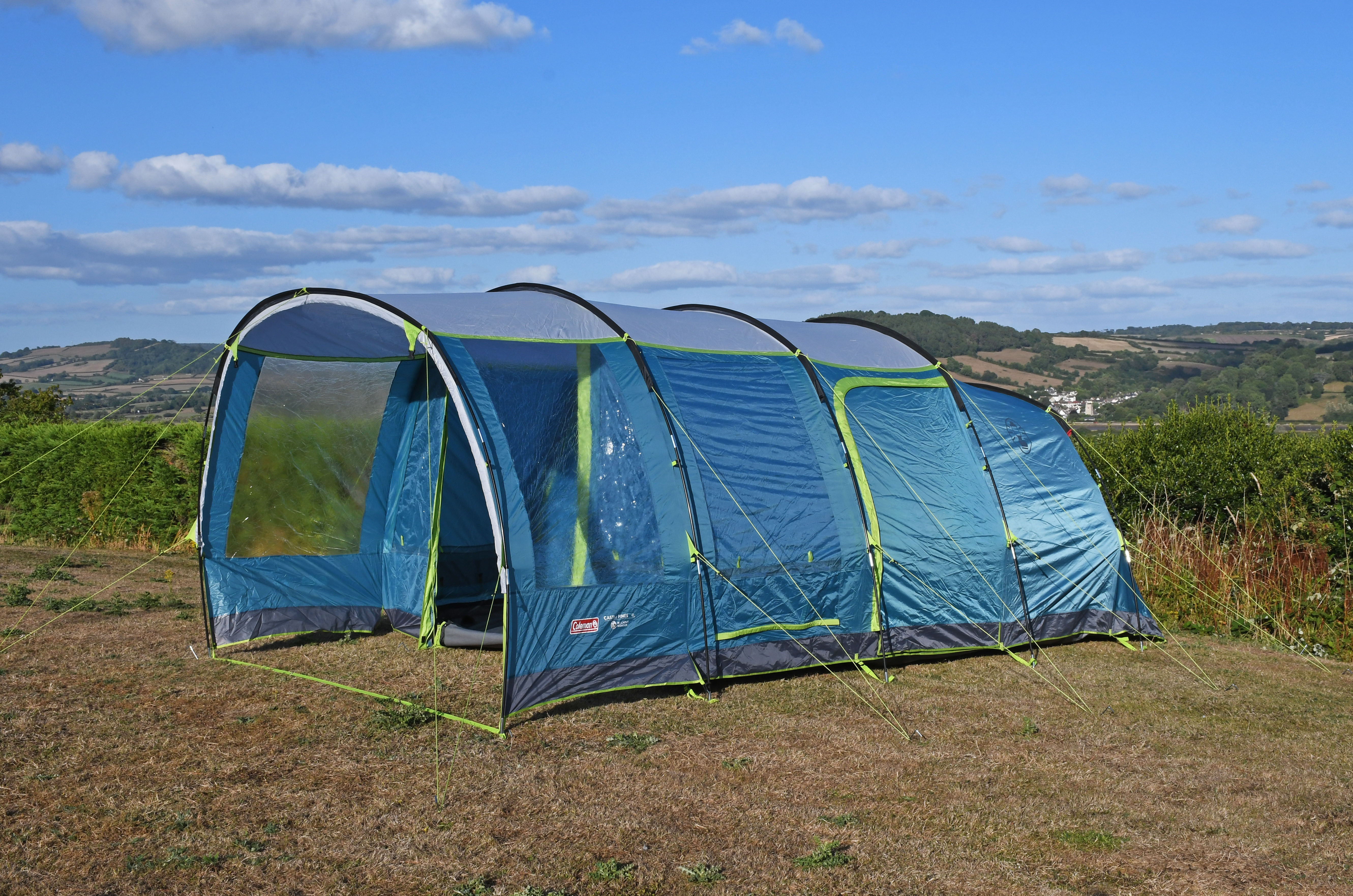
Coleman’s Castle Pines 4L BlackOut Tent is a palatial home-from-home for a young family, with two spacious bedrooms complete with light-blocking drapes, a generous living area and a vestibule for cooking under when rain threatens. It’s an old-school, pole-based tunnel tent, but has plenty of room and enough innovations inside to make an extended camp-out comfortable.
-
+
Excellent blackout bedrooms
-
+
Spacious living / wet-weather area
-
+
Two doors and lots of windows
-
+
Vestibule for safe cooking
-
-
No recycled material used
-
-
Requires two people to pitch (ideally)
-
-
Carry bag unlikely to last long
Why you can trust T3

For this Castle Pines 4L BlackOut Tent review I enlisted the help of the family, who don’t mind being hypercritical when they are press-ganged into spending a night or two in semi-alfresco accommodation. When the gear is good, they love it and we all have a great time, but when things fall short of perfect, I am alerted to it very quickly. When assessing how the Castle Pines 4L shapes up compared to the best tents out there, they are the perfect crash test buddies.
And, while it certainly could be used by four adults – providing they all get along very well – Coleman’s Castle Pines 4L (which retails for £599.99 in the UK) is definitely a tent primarily designed for car camping escapades with the family. So long as your family is the stereotypical two-parents-and-two-children variety, and the kids don’t mind sharing, that is. You might squeeze an extra little one in somewhere, but it’s perfectly proportioned for a square-shaped nuclear family, with two equal-sized bedrooms, each large enough to take a double camping bed/mattress, or two singles very closely arranged.
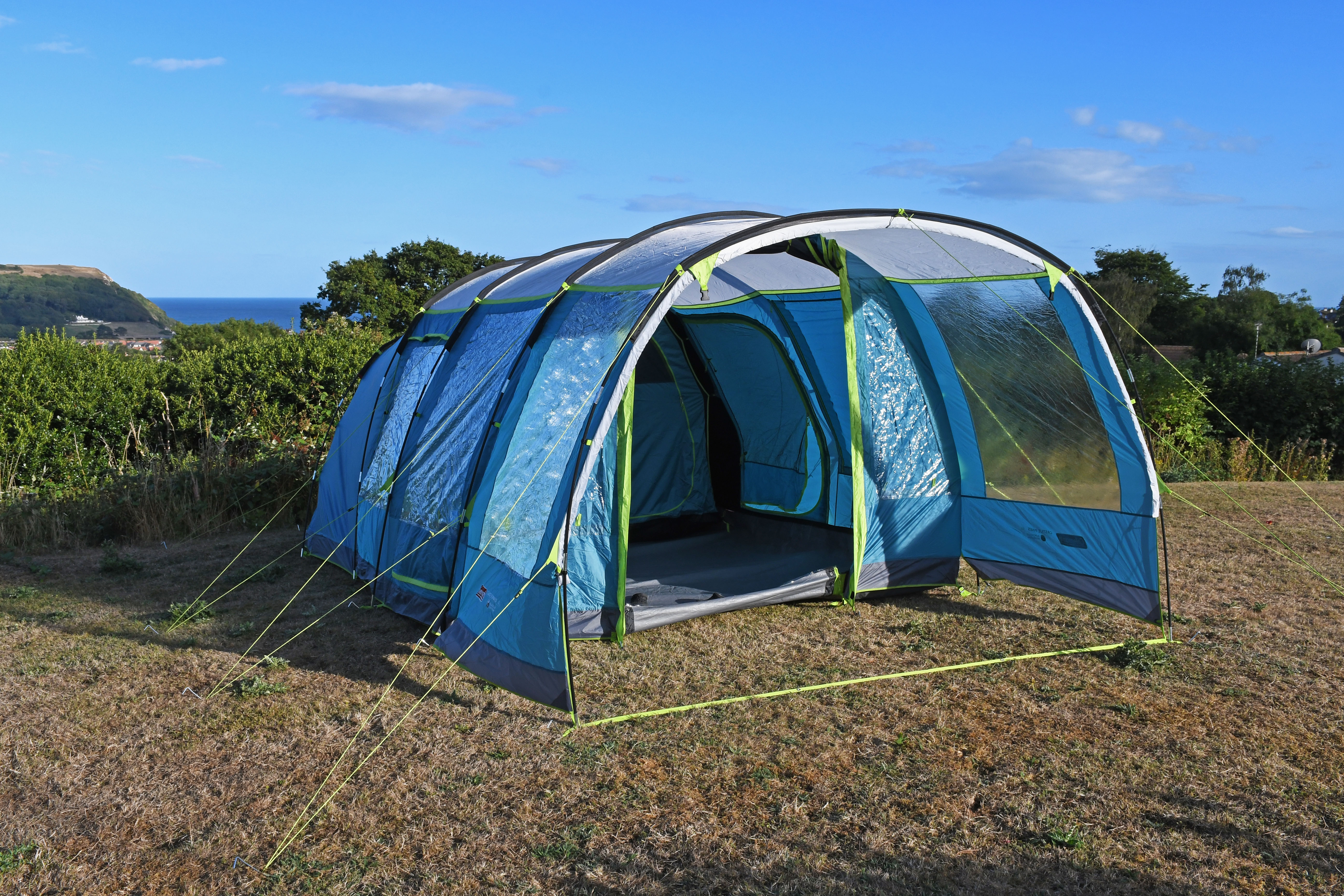
The Coleman Castle Pines 4L BlackOut Tent has a roomy vestibule for we weather cooking
Coleman Castle Pines 4L BlackOut Tent Review – design and features
The Castle Pines 4L is one of Coleman’s newer family shelters, but it follows a tried-and-tested tent design, based on five fibreglass poles that thread through dedicated sheaths in the flysheet and slot into pockets on either side to form, once tensioned, a long tunnel structure. It’s a simple and effective design, which means almost everyone can comfortably stand up straight in the bedrooms and living areas.
Inside, the sleeping quarters are created with the use of blackout material walls, which are suspended from the outer shell of the tent by hoops and toggles. There are two bedrooms, but if you want to join them up to make one large sleeping area, that’s easily done by unzipping the wall between them. There is no need to remove the bedrooms when dropping the tent, so each time you pitch it, they’re already in place and ready to be used.
In front of the sleeping area there’s a large communal room, at least as big again as the bedrooms combined, with a floor-to-ceiling side door and multiple transparent windows, which can be shuttered to keep out the light. The main front door opens to a reasonably large, semi-covered vestibule area with no floor, where you can safely cook in any conditions, protected to some extent from the elements.

The living area of the Coleman Castle Pines 4L BlackOut Tent is really generous and features several windows, as well as a side door
Coleman Castle Pines 4L BlackOut Tent Review – pitching and testing
As usual, my erstwhile enthusiastic little helpers conveniently disappeared as soon as we got to the campsite, leaving me to pitch the tent largely on my own. My youngest did come back under protest, and half-heartedly held on to a guy rope for a minute or two, which was of some assistance, but it was basically a solo effort. And yes, I’m sure there were violins playing somewhere. The point I’m making, though, is that it is possible to pitch the Castle Pines 4L BlackOut Tent on your own, but not without quite a bit of sweating and more swearing than would be appropriate if the family were close enough to hear it (instead of being miles away, variously climbing trees and checking out the farm shop).
Once up, with all the guy ropes pegged out, the Castle Pines 4L feels both spacious and very secure. Tunnel tents are never as bombproof as dome or geodesic designs, but in high winds there are several cords that can be tensioned to provide extra structural stability.
The central living area is easily big enough to set up a table and chairs for four people to play cards and board games, or simply sit chatting when the weather turns ugly. There are plenty of windows in this room, with transparent plastic to let in the daylight.
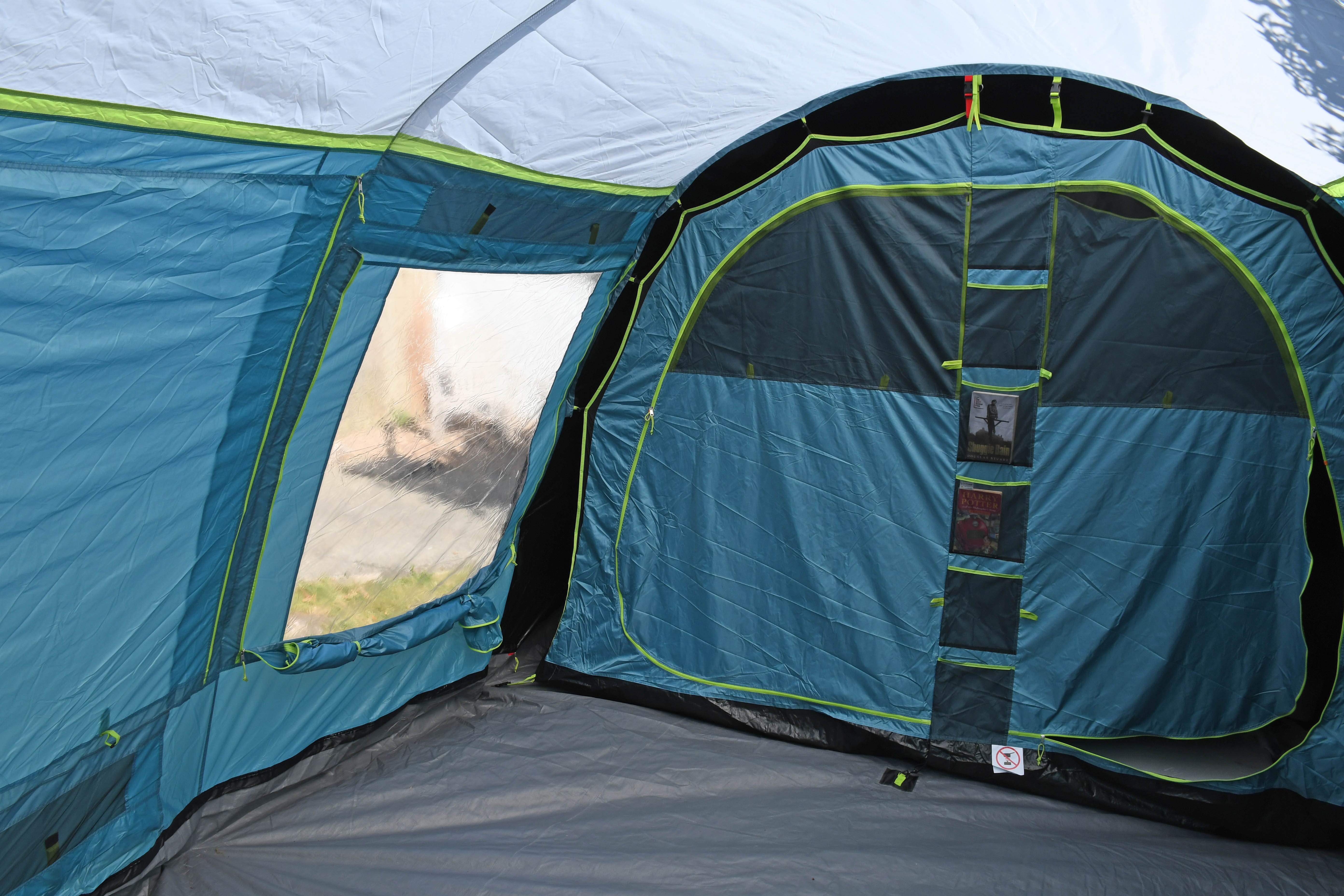
Several plastic windows let in light (and heat)
I was testing this tent in the midst of a heatwave, and the living room rapidly turned into a greenhouse when the sun was blazing, but as soon as I opened up the side door, the air was able to flow through nicely and the heat was quickly evicted.
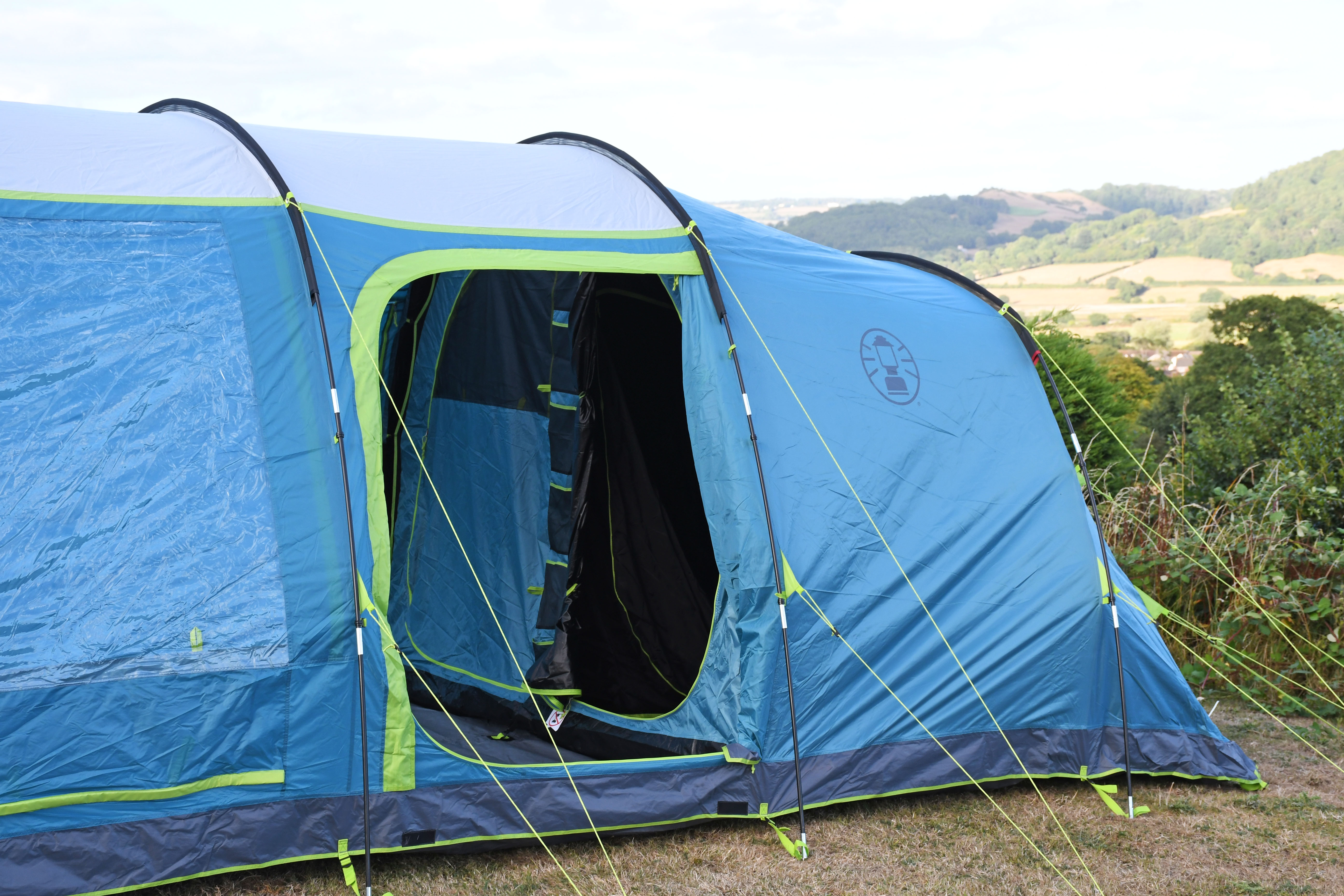
The side door allows heat to escape
Overnight I found the blackout material served its purpose well, preventing the impatient mid-summer sunrise from waking my youngest at the first flush of dawn. In fact, she slept in until a very respectable 7am, and even then we lay there listening to the birds before venturing out into the main living area, which was flooded with fluorescent blue light by comparison. And, if we’d let her, my teenager would have happily stayed in the other darkened den for most of the morning.
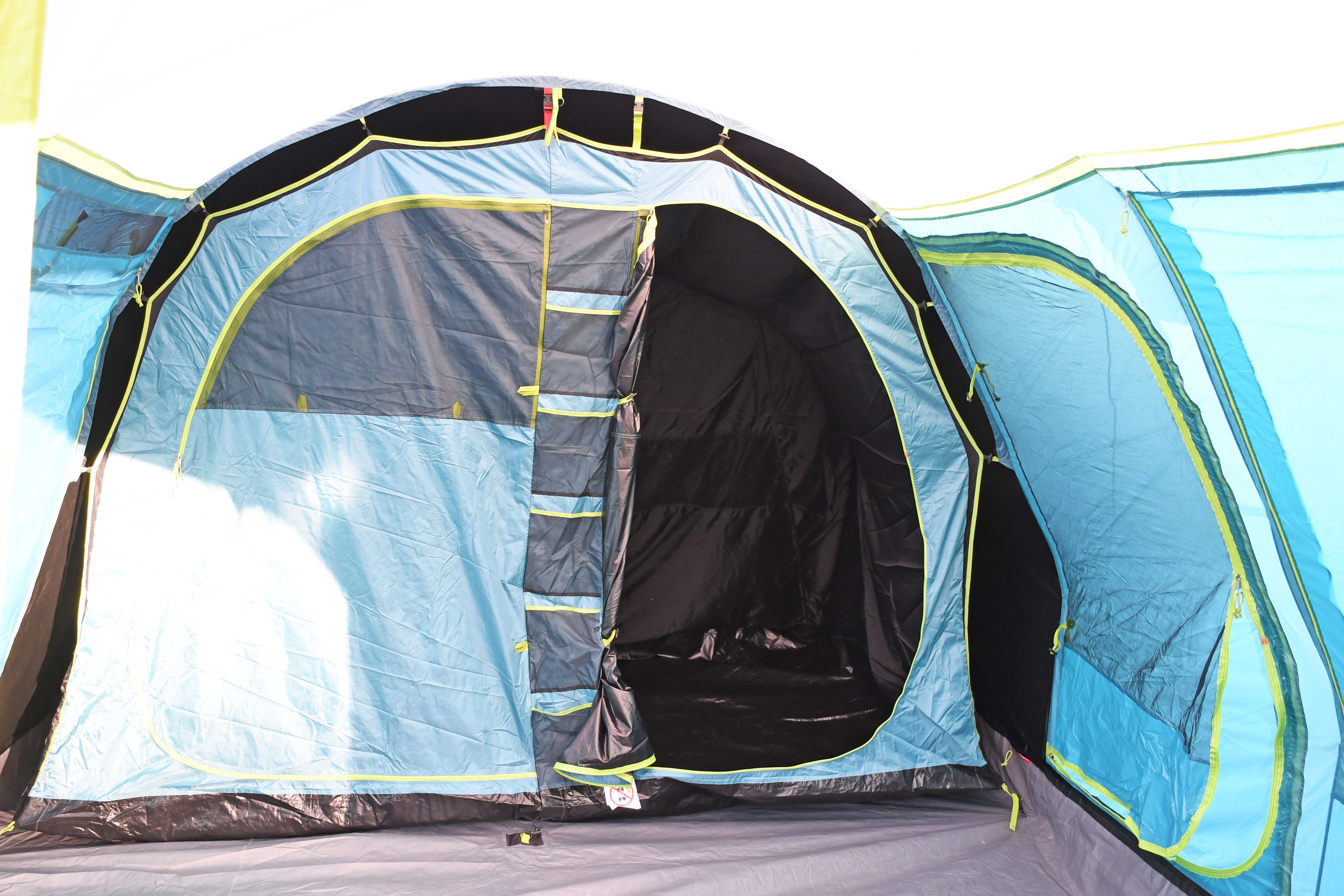
The blackout rooms make sleeping past the first flush of dawn possible (if the avian chorus doesn't wake you)
The bug-mesh inner doors were effective too. On the barmy nights I spent in the Castle Pines 4L, the mosquitoes were out in force, compelling me and the kids to cover up and then seek shelter inside the tent, and the bitey blighters were unable to follow us. The groundsheet is sturdy, and of course it’s sewn in too, so creatures can’t crawl in that way either. I was testing this tent amid a drought, so rain was the least of our worries, but the fly has an impressive hydrostatic head rating of 6000mm, which makes it very waterproof, and I would have no hesitation about using this tent in all kinds of conditions. Like all large family tents, the interior is so large it will never warm up from body heat, like little tents do, so it will be chilly when temperatures drop in autumn, when good sleeping bags will be required.
This is definitely a tent that I would only want to put up when staying in one spot for several days, and therefore the ability to organise gear and clothes is important. With this in mind, storage on the inside of the bedrooms is a little bit lacking – there’s just one mesh pocket in each, which is sufficient for a headtorch, phone and a couple of other small things, but not a lot else. Just outside the sleeping area, however, there’s a whole vertical line of mesh pouches, large enough for books and various other bits and pieces (including the kids’ pyjamas), which somewhat makes up for this. Also inside this main communal area there are lots of rings (although no hooks) for hanging things such as lanterns and gear lofts, which all come in very useful.

The Coleman Castle Pines 4L BlackOut Tent - all packed up
Dropping a family tent is always a lonely task (hark… more violins), but thankfully, the Castle Pines 4L is a relatively simple structure to dismantle, even on your lonesome. As usual, the most challenging part of breaking camp was getting what suddenly felt like a mammoth amount of material back into the bag it originally came so neatly packaged up in.
I actually managed it first time (twice), without having to re-roll the tent or having a massive tantrum, which means the storage sack must be a bit more generous than it looks, however this dreaded task would definitely have been made easier if there was a second zip on the bag. It sounds like a small niggle, but having now pitched and dropped the tent a couple of times, I think the single, relatively small zip on the bag will likely break with repeated use, which will leave you with tent that occasionally haemorrhages its contents during transit.
Coleman Castle Pines 4L BlackOut Tent Review – Some alternatives to consider
If you’re going camping with a bigger crew, it’s worth considering Coleman’s Castle Pines 6L BlackOut Tent, which costs an extra £100, but has an additional double bedroom and otherwise shares many of the 4L’s features. If you’re more concerned about the environment than having blackout bedrooms, then the cheaper Vango Joro 450 offers a comparable amount of sleeping and living space, and it is made with a material spun from recycled plastics (albeit one with half the Coleman’s HH rating). For those with slightly larger budgets (and bigger car boots), air tents such as the Vango Rome II Air 550XL are a good choice. And if you’re looking for something considerably bigger, check out the whopping Outdoor Revolution Airedale 7SE.
Coleman Castle Pines 4L BlackOut Tent – in conclusion
Overall, the Coleman Castle Pines 4L BlackOut Tent is a decent basecamp for families who like to spend multiple nights in one spot. The blackout rooms are excellent for those who have kids of any age (parents with young ones will really appreciate them, as will teenagers who want to sleep in). A simple tunnel design, it’s not especially ground breaking, but it is spacious and relatively light and easily packable for a good-sized family tent. The materials and build quality are both very good, so this robust and highly waterproof shelter should last the average family for many years.
Sign up to the T3 newsletter for smarter living straight to your inbox
Get all the latest news, reviews, deals and buying guides on gorgeous tech, home and active products from the T3 experts

Author of Caving, Canyoning, Coasteering…, a recently released book about all kinds of outdoor adventures around Britain, Pat Kinsella has been writing about outdoor pursuits and adventure sports for two decades. In pursuit of stories he’s canoed Canada’s Yukon River, climbed Mont Blanc and Kilimanjaro, skied and mountain biked across the Norwegian Alps, run ultras across the roof of Mauritius and through the hills of the Himalayas, and set short-lived speed records for trail-running Australia’s highest peaks and New Zealand’s nine Great Walks. A former editor of several Australian magazines he’s a longtime contributor to publications including Sidetracked, Outdoor, National Geographic Traveller, Trail Running, The Great Outdoors, Outdoor Fitness and Adventure Travel, and a regular writer for Lonely Planet (for whom he compiled, edited and co-wrote the Atlas of Adventure, a guide to outdoor pursuits around the globe). He’s authored guides to exploring the coastline and countryside of Devon and Dorset, and recently wrote a book about pub walks. Follow Pat's adventures on Strava and instagram.
-
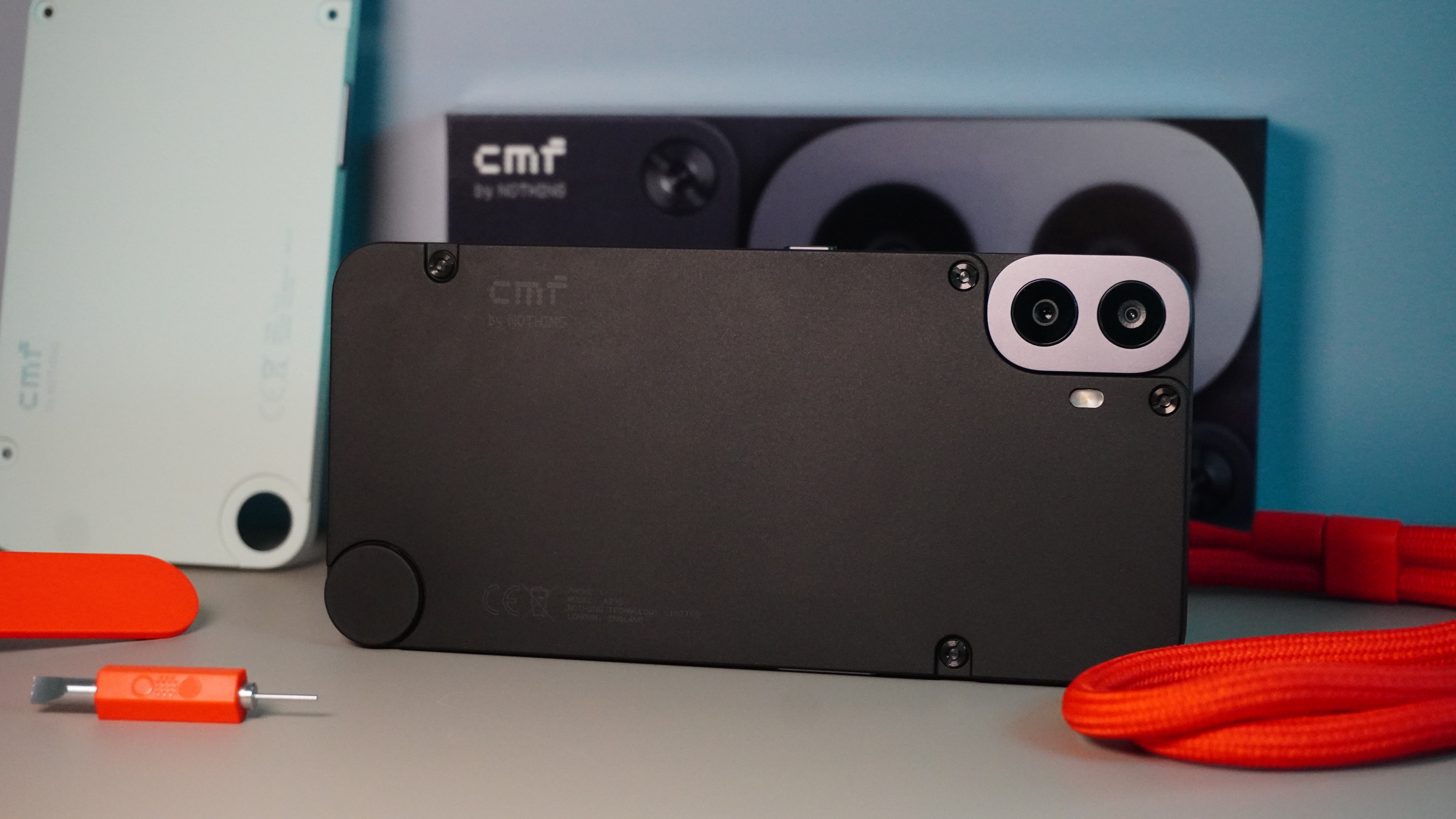 Nothing's next phone could be a budget powerhouse, thanks to this confirmed hardware detail
Nothing's next phone could be a budget powerhouse, thanks to this confirmed hardware detailOfficial details reveal more about the next phone coming from Nothing
By Chris Hall Published
-
 Adidas Adizero Boston 13 is softer, faster, and finally feels like a proper trainer
Adidas Adizero Boston 13 is softer, faster, and finally feels like a proper trainerThe brand quietly fixed everything runners didn’t love about the Boston 12
By Matt Kollat Published
-
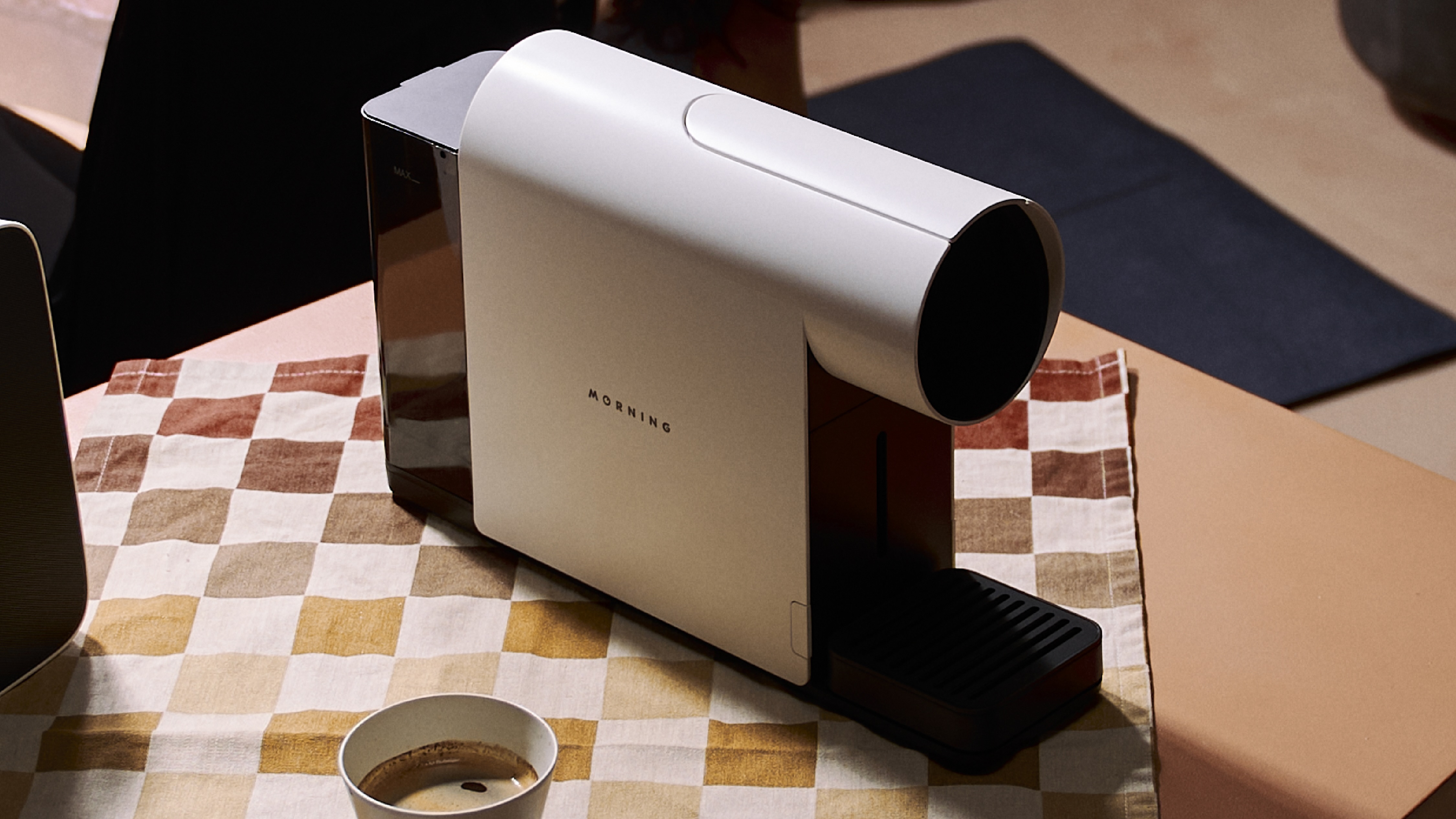 The Morning Machine’s younger sibling is here – same precision, now in a compact design
The Morning Machine’s younger sibling is here – same precision, now in a compact designIntroducing the Morning Mini
By Lizzie Wilmot Published